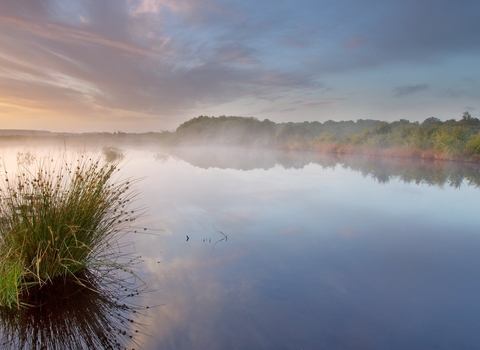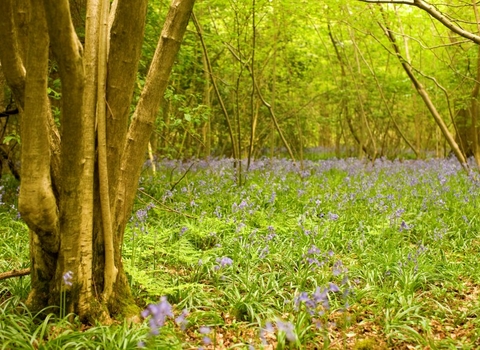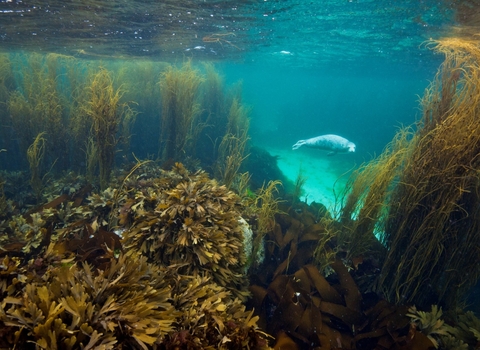Caring for nature
Protecting places to save their wildlife and habitats has been at the heart of what we do since we were founded more than 100 years ago. Today The Wildlife Trusts care for more than 2,300 nature reserves - woods, meadows, marshes, city parks. At sea we campaign for Marine Protected Areas - parts of the seabed where wildlife is protected. Find out more about the different types of protected wildlife sites in the UK.
Statutory protected sites
If a site of nature conservation importance has ‘Statutory Protection’, it means that it receives protection by means of certain legislation in recognition of its biodiversity and/or geological value.
Sites of Special Scientific Interest (SSSIs)
SSSIs are designated under the Wildlife & Countryside Act 1981 where they support habitats and/or species of national importance. SSSIs represent our best sites for wildlife and geology. Well over half, by area, are internationally important and many play an important part in local culture and economies or provide wonderful opportunities for people to enjoy wildlife and the landscape. The natural wildlife and geological features of SSSI’s are irreplaceable parts of our national heritage. These are protected in order to preserve their importance, and to prevent damage and development. We have many incidents were these sites are damaged through illegal off road driving, dumping waste and development.
Special Areas of Conservation (SACs)
SACs are designated where they support internationally important habitats and/or species listed in the EC Habitats Directive.
Special Protection Areas (SPAs)
SPAs are areas which have been identified as being of international importance for the breeding, feeding, wintering or the migration of rare and vulnerable species of birds found within European Union countries. They are designated under the European ‘Birds Directive 1979’. More information about SPAs can be found on the Natural England website.
Ramsar Sites
The Ramsar Convention is an international agreement signed in Ramsar, Iran, in 1971, which provides for the conservation and good use of wetlands. The UK Government ratified the Convention and designated the first Ramsar sites in 1976.
National Nature Reserves (NNRs)
NNRs are designated under section 35 of the Wildlife & Countryside Act 1981. They are owned by or managed through agreements with Natural England.
Local Nature Reserves (LNRs)
All district and county councils have powers to acquire, declare and manage LNRs. Town and parish councils can create LNRs if the district council has given them the power to do this. To qualify for LNR status, a site must be of importance for wildlife, geology, education or public enjoyment. LNRs must be controlled by the local authority through ownership, lease or agreement with the owner.
Non-statutory sites
Local Wildlife Sites (LWS)
Local Wildlife Sites are sites with ‘substantive nature conservation value’. They are defined areas, identified and selected for their nature conservation value, based on important, distinctive and threatened habitats and species with a national, region.
Found on both public and private land, LWSs vary in size and shape from small ponds and copses and linear features such as hedgerows, road verges and water courses to much larger areas of habitat such as ancient woodlands, heaths, wetlands and grassland. They support both locally and nationally threatened wildlife, and many sites will contain habitats and species that are priorities under the county or UK Biodiversity Action Plans (BAP). Collectively they play a critical role in the conservation of the UK’s natural heritage by providing essential wildlife refuges in their own right and by acting as stepping stones, corridors and buffer zones to link and protect other site networks and the open spaces of our towns and countryside.
There are currently a number of different terms in use to describe Local Wildlife Sites, including Sites of Importance for Nature Conservation (SINCs), Sites of Nature Conservation Importance (SNCIs) and County Wildlife Sites. They are usually selected by the relevant Wildlife Trust, along with representatives of the local authority and other local wildlife conservation groups. The LWS selection panel, select all sites that meet the assigned criteria, unlike Sites of Special Scientific Interest (SSSIs), which for some habitats are a representative sample of sites that meet the national standard. Consequently, many sites of SSSI quality are not designated and instead are selected as LWSs. Consequently, LWSs can be amongst the best sites for biodiversity. It is essential, therefore, that the different status assigned to LWSs should not lessen the perception of their importance and the vital role they play in conserving our natural heritage. Defra published Local Sites: Guidance on their identification, selection and management in 2006.



